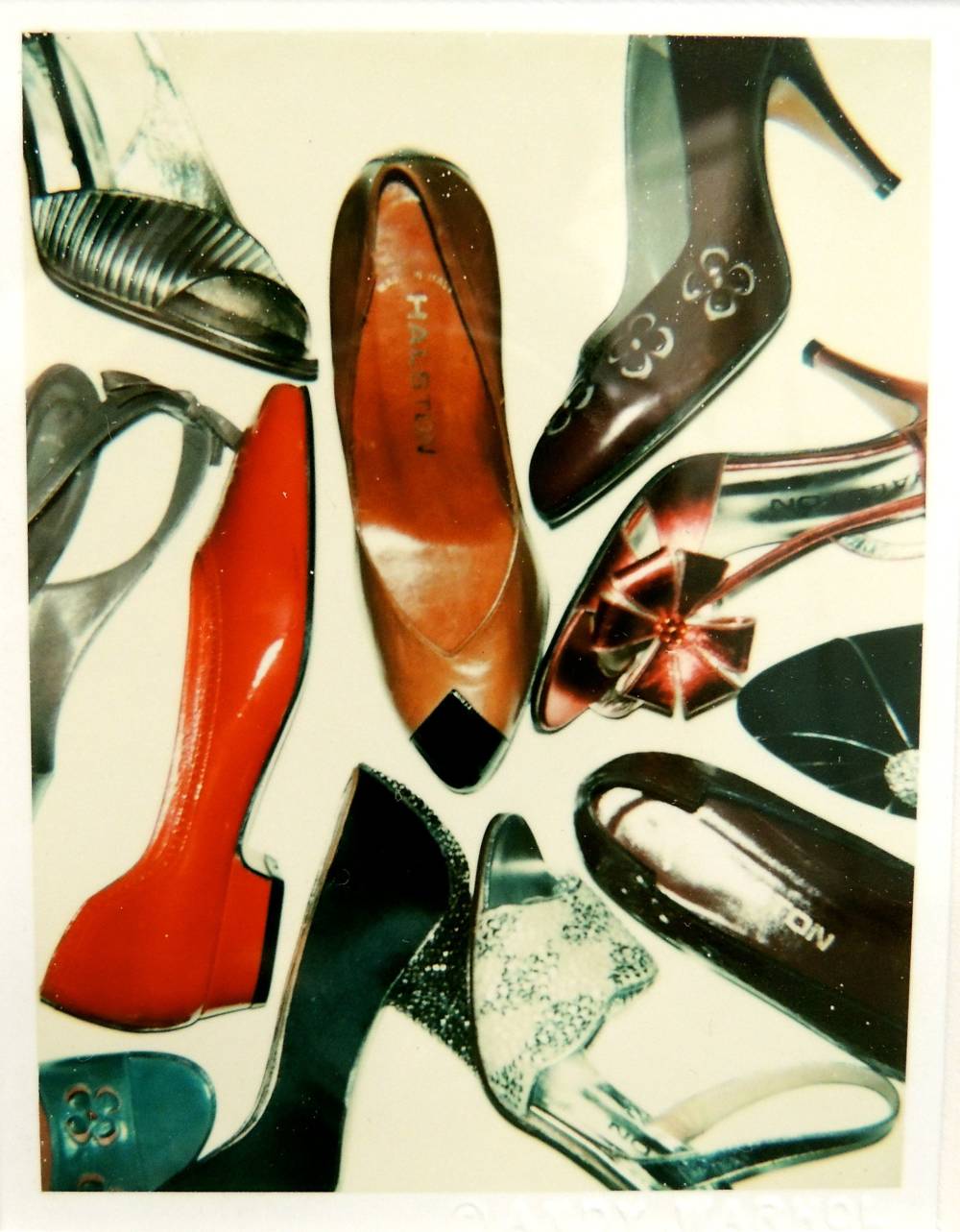
Andy Warhol
Shoes, 1981
Andy Warhola – yes, ‘Warhola’ – arrived in New York City from his hometown of Pittsburgh, Pennsylvania in 1949. Over a decade before the late pop artist first utilized the silk-screening technique – a method of production that later came to define his artistic practice – Warhol found work as a commercial illustrator, jumpstarting his incredible career.
Landing his first job with Glamour magazine in 1950, Warhol’s big break stemmed from an early assignment to illustrate shoes for a feature appropriately entitled “Climbing the Ladder of Success.” Impressed by his sketches, the magazine awarded him six additional pages, while the credit line mistakenly read “Drawings by Warhol,” a misprint that in turn lead young Andy to drop the “a” from his last name; the American artist was born Andy Warhola in 1928.
Andy Warhol
I. Miller Carnival Plaid Heels Ad, 1955
Andy Warhol
New York Times Advertisement for I. Miller Shoes, - April 17th, 1955
A pivotal turning point in Andy’s newfound career as an illustrator came in 1955 when I. Miller, a defunct shoe company established in New York in 1901, hired the young artist to create campaign advertisements for the Sunday edition of the New York Times. These full-page and half page adverts, which ran for several years, were bold and colorful visual fantasies – often incorporating painting, drawing and collage – amongst a sea of otherwise tiny images and text. A spectacular showcase for both I. Miller and Andy Warhol, these advertisements eradicated the barrier between illustration and fine art, furthering Warhol’s career and reviving the I. Miller brand from a dowdy, dusty establishment into a stylish emporium seen at the pinnacle of art and fashion
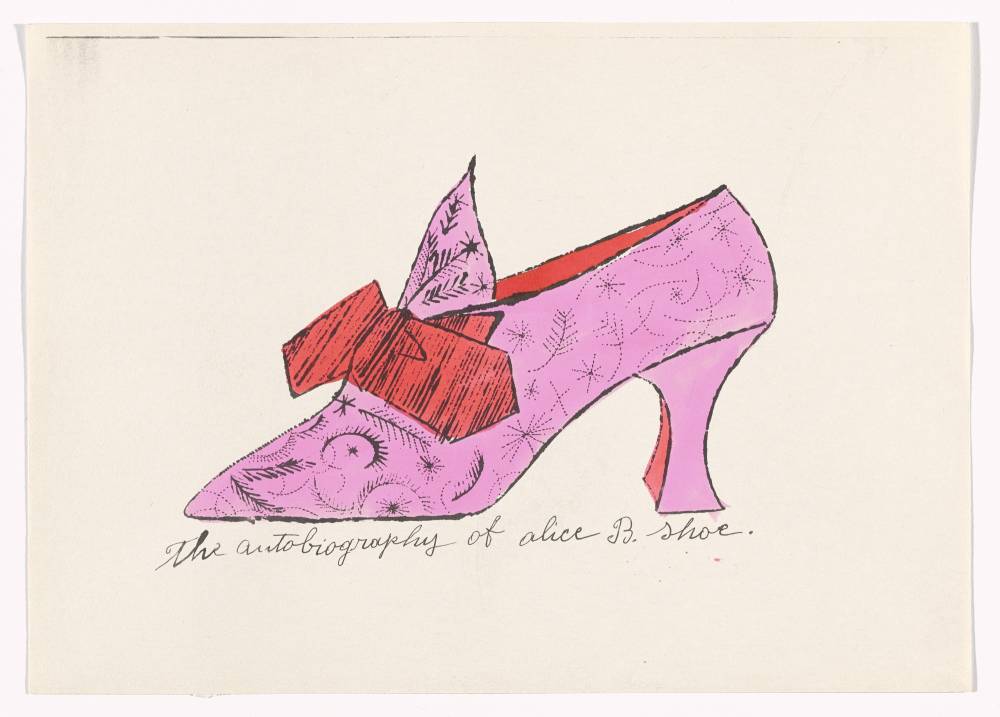
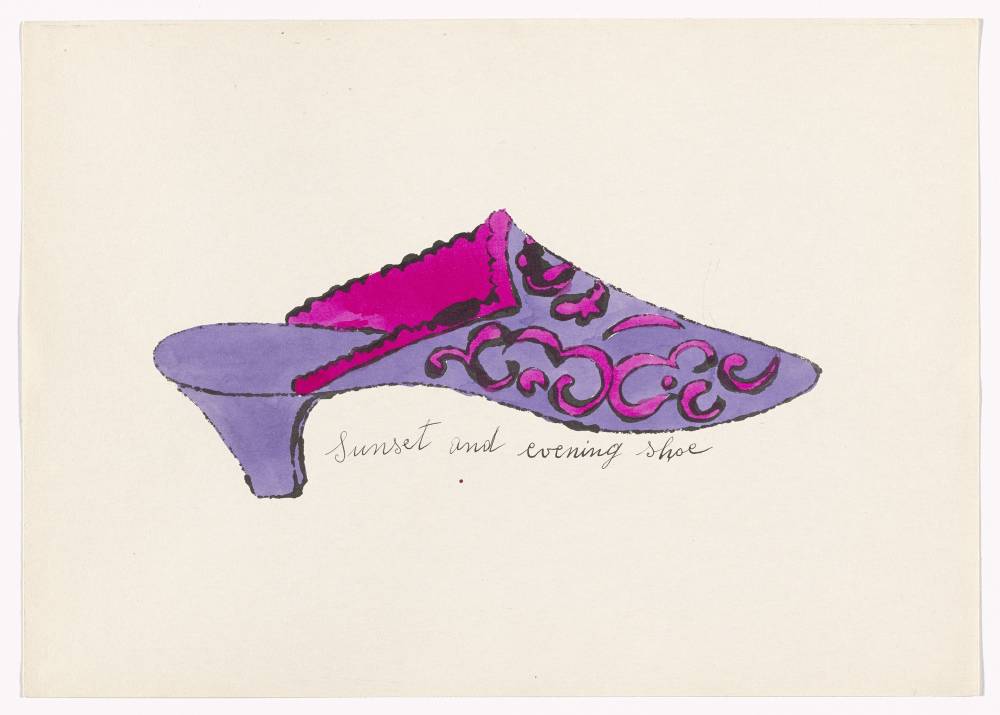
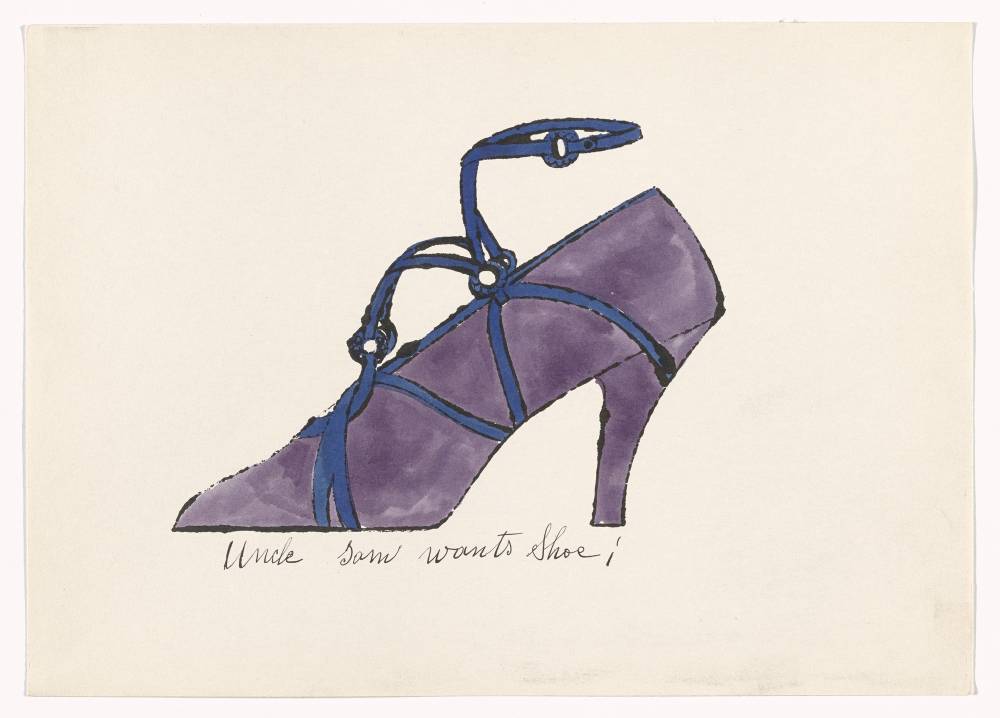
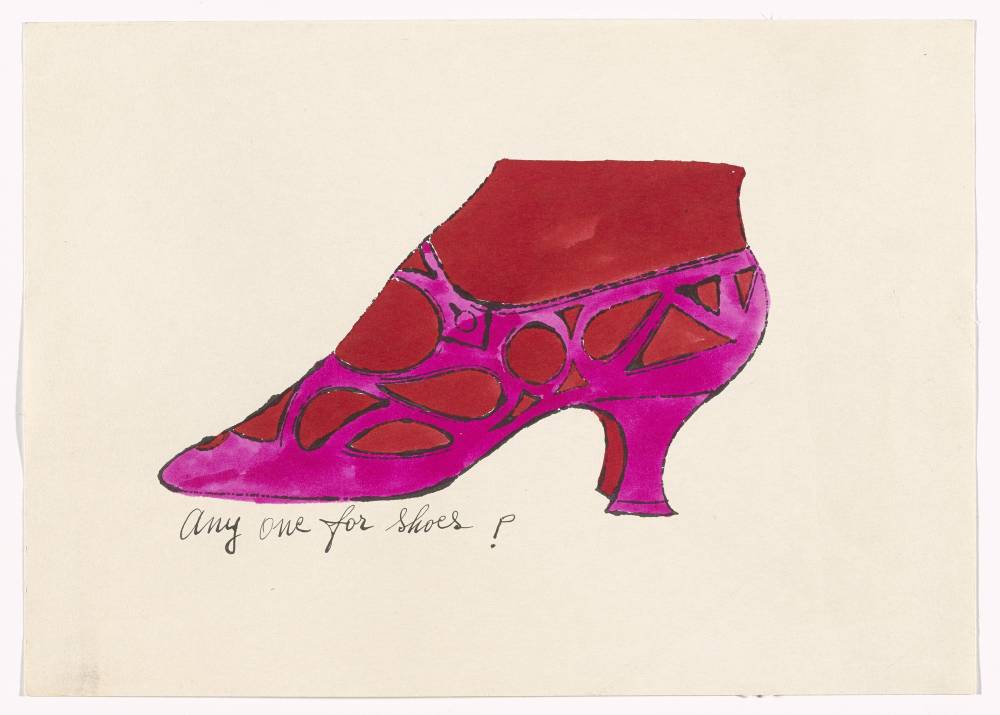
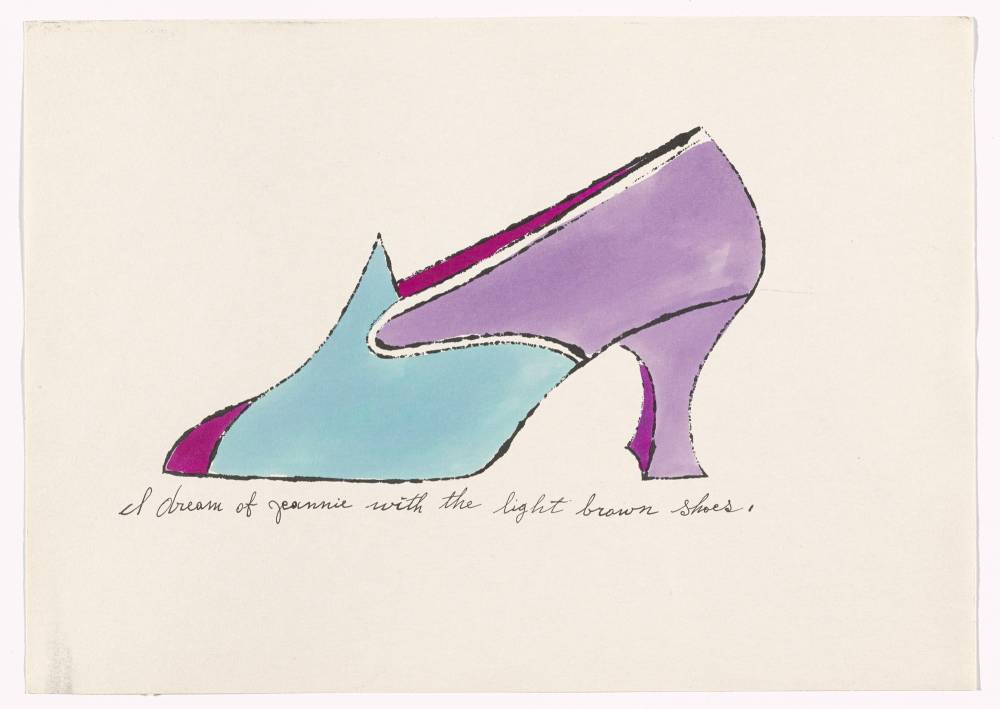
As Warhol’s career prospered his identification with the I. Miller campaign permeated the works he began making himself as an artist. In 1956 Warhol began a series of sketches depicting shoes and boots adorned with gold leaf, embossed foil and decorative cut outs. Warhol’s series of fantasy footwear conveyed the personalities of figures he admired, including fashionable socialites and magazine editors, as well as actors, actresses and authors. Much like Warhol’s successive works, these early shoe collages represent the beginning of the artist’s fascination with fame and his focus on celebrity as subject matter.
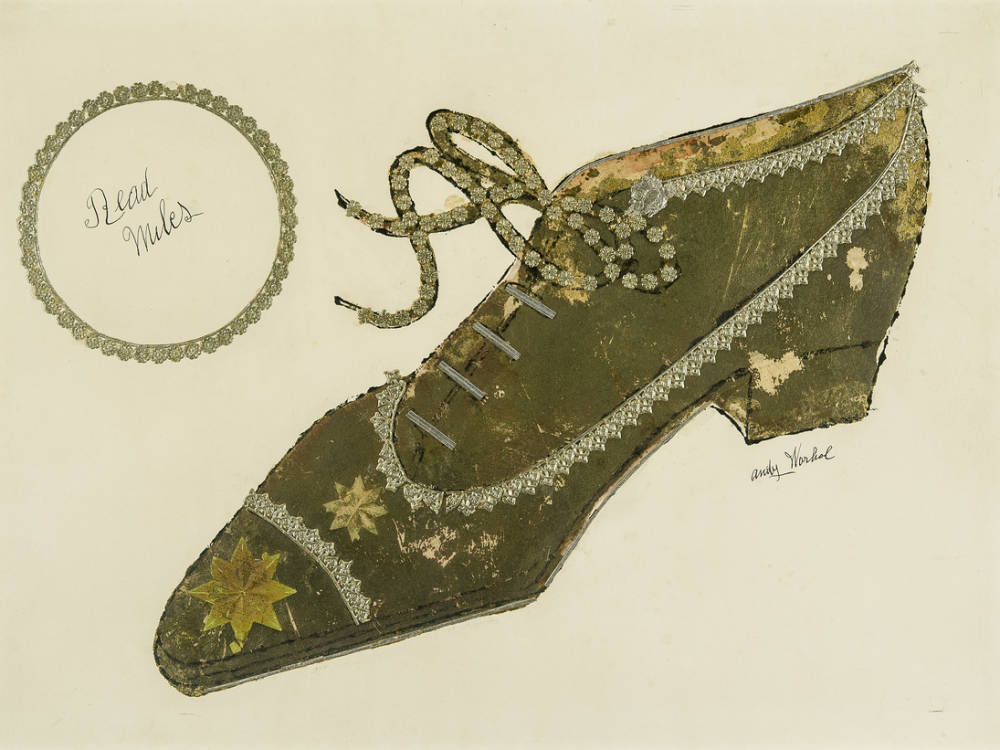
Andy Warhol
Golden Shoe (Read Miles), 1956
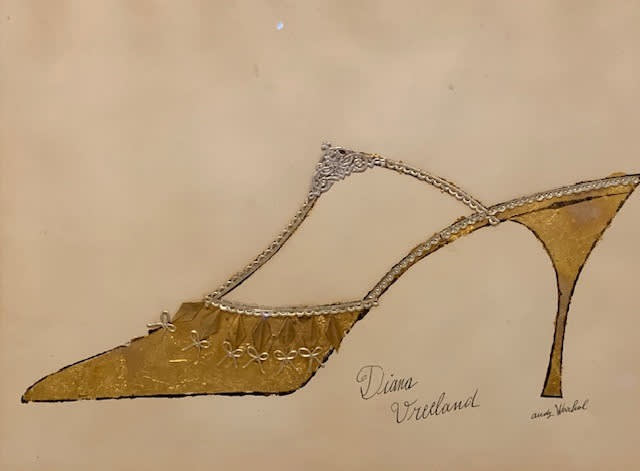
Andy Warhol
Golden Shoe (Diana Vreeland), 1956
Andy Warhol
Golden Shoe (Minnie F.), 1955
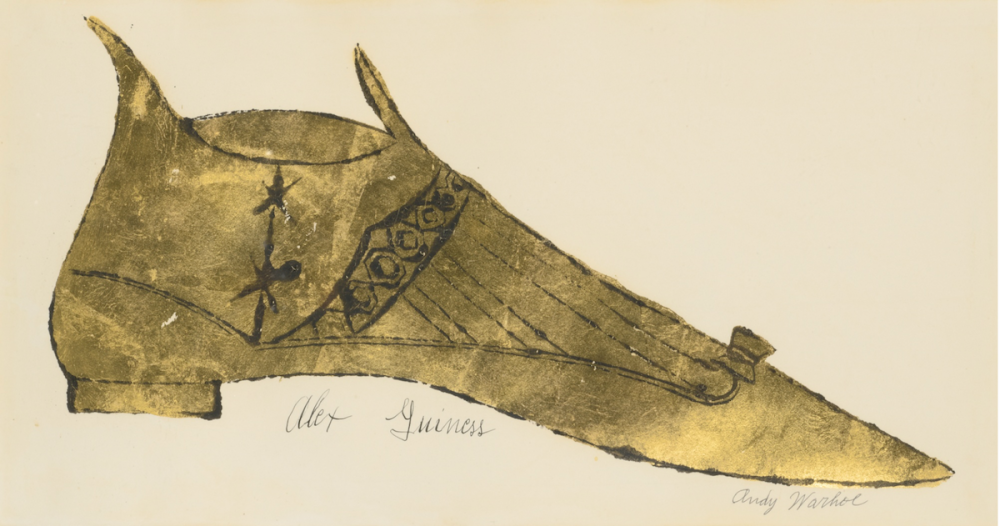
Andy Warhol
Golden Shoe (Alex Guiness), 1956
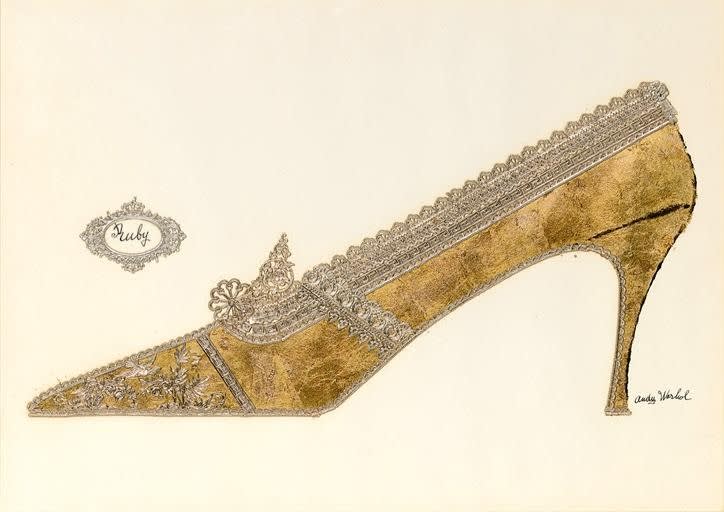
Andy Warhol
Golden Shoe (Ruby), 1956
Labeled and signed with a distinctive script, that was actually Warhol’s mother’s handwriting, each fantasy shoe is inscribed with the (often misspelled) name of its subject. From fashion editors Leo Lerman and Diana Vreeland, to actress Mae West and Zsa Zsa Gabor, Warhol made some 40 shoes within the series, which were shown at the Bodley Gallery in December 1956, selling for $50-$225 each.
Andy Warhol
Golden Boot (Elvis Presley), 1956
Andy Warhol
Golden Shoe (Christine Jorgenson), 1956
So much as Warhol’s shoes drawings fused fashion, art, film and society, they were precursors to his later portraits; personifying subjects through purposeful design elements present in each shoe’s unique composition. The swashbuckling Elvis Presley boot, for example, projects Elvis as a movie star with complex, erotic appeal – his film ‘Love Me Tender’ debuted in 1956 – complimented by decorative treatments and feminine undertones. While Warhol’s shoe for George Jorgenson, the first person to become widely known in the US for having sex reassignment surgery, is displayed from an above angle, appearing mismatched with two noticeably different sizes; deliberate decisions serving as commentary on both the sexual and social duality of Jorgensen’s identity.

Andy Warhol
Golden Shoe (Julie Andrews), 1956
English actress Julie Andrews, who was staring in the Broadway adaptation of “My Fair Lady” in 1956, went with her husband Tony Walton to the opening of Warhol’s ‘Crazy Golden Slippers’ show, where Andrews found herself personified as a classical Cinderella-esque pump.
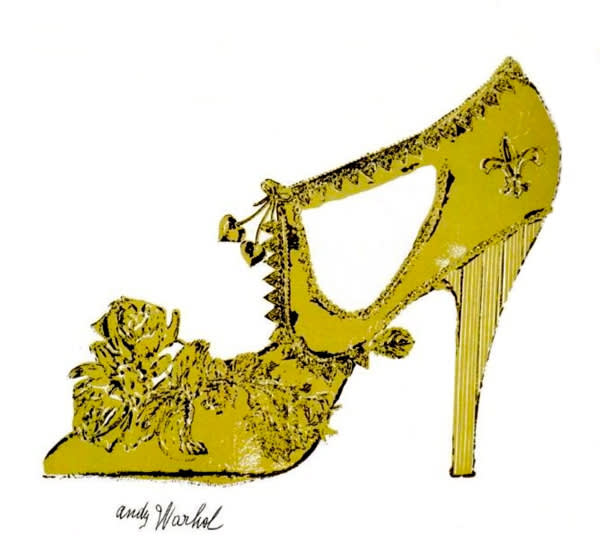
Andy Warhol
Golden Shoe (Zsa Zsa Gabor), 1956
The Zsa Zsa Gabor fantasy shoe, based on an actual I. Miller design Warhol originally drew in 1955, features a baroque high heel decorated with cutouts and heaps of embellishment, alluding to Gabor’s jazzy social life and elaborate wardrobe.
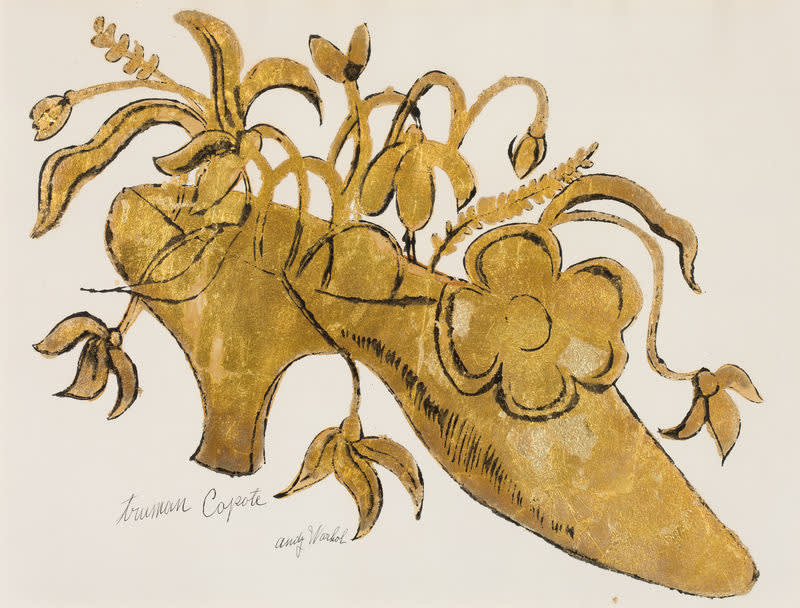
Andy Warhol
Golden Shoe (Truman Capote), 1956
Likewise, the collaged gold leaf mule Warhol designed for his longtime muse and crush, American novelist and playwright Truman Capote, featured wildly arranged flowers emerging from the shoe’s interior; in reference to both Capote’s outwardly gay personality and his musical “House of Flowers” which was appearing on Broadway. Warhol’s Capote shoe was purchased by socialite D. D. Ryan who gifted the work to Truman as a Christmas present, writing, “He’s becoming very well known. Very on-coming.”
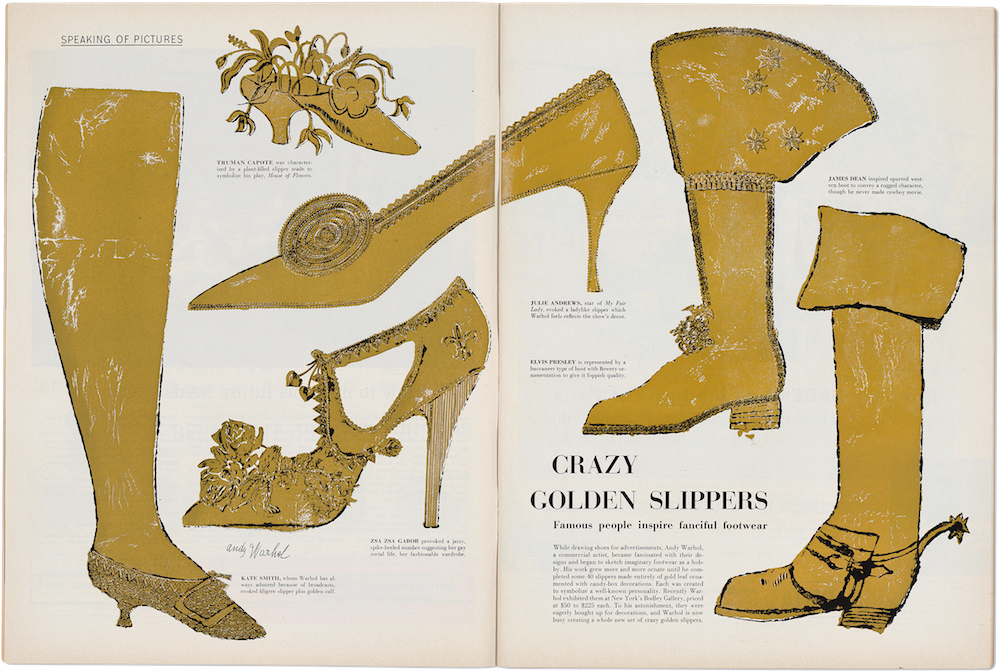
Andy Warhol
Crazy Gold Slippers, Life Magazine, 1957
As Ryan’s note so aptly stated, Warhol was on a rapid rise to achieving greater levels of critical fame and notoriety. By January 1957, Warhol’s shoes reached the pages of Life magazine in a story titled “Crazy Gold Slippers,” and have since been immortalized on the catwalk, appearing on dresses and handbags in Raf Simons’ fall/winter 2013 collection for Christian Dior.
While Warhol’s early work as an illustrator for Glamour magazine and I. Miller represented fashion seen through the lens of art, Andy’s 1956 fantasy shoes and later, his Diamond Dust shoe series from 1980, constitute a notable shift towards art merely utilizing fashion as subject matter; a byproduct of Warhol’s growing popularity and undisputed star power.


